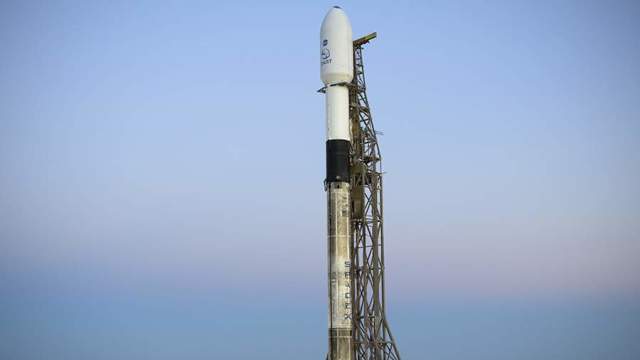The Falcon 9 launch vehicle launched in California (USA) with the kamikaze space probe DRAT, which will crash into an asteroid to test the technology of protecting the Earth from collisions with space objects. NASA is broadcasting live on November 24.
The launch of a reusable launch vehicle from the Vandenberg cosmodrome took place at 09:21 Moscow time on November 23. According to SpaceX (founder Elon Musk), which owns the rocket, this is the company's first interplanetary mission for NASA. The launch uses the Falcon 9 first stage, which has already flown into space twice.
The spacecraft is sent to the near-Earth asteroid Dimorph, which orbits the larger asteroid Didymus. The diameter of the Dimorph is about 150 m, it does not pose a danger to the Earth.
The meeting of the probe with the asteroid will take place 10 months after the launch. The device weighing 633 kg will crash into the asteroid at a speed of about 24 thousand km / h to change the trajectory of its movement. NASA wants to test the possibility of influencing the trajectory of space bodies that could potentially be dangerous to the Earth.
As told in Roscosmos, correction of the orbit of the International Space Station (ISS) due to the approach to the fragment of the rocket company Elon Musk is not required at the moment. According to the state corporation, the minimum distance between the ISS and space debris will be more than 5.3 km.
On November 23, Roscosmos warned that the ISS would approach a fragment of a SpaceX rocket on November 25. As emphasized in the state corporation, the situation is under the control of the Main Operational Control Group of the Russian segment of the ISS.
On November 8, NASA reported that an asteroid with a diameter of 300 m will approach the Earth on December 11. The celestial body will fly at a distance of about 3.9 million km from the planet.
The facility was opened in 1982. It already has a classification as potentially dangerous due to the risk of a greater approach to Earth than the estimated distance.
In August, the potentially dangerous asteroid 2016 AJ193 flew past Earth at a distance of 3.4 million km. This was the closest approach of the object in several decades.

